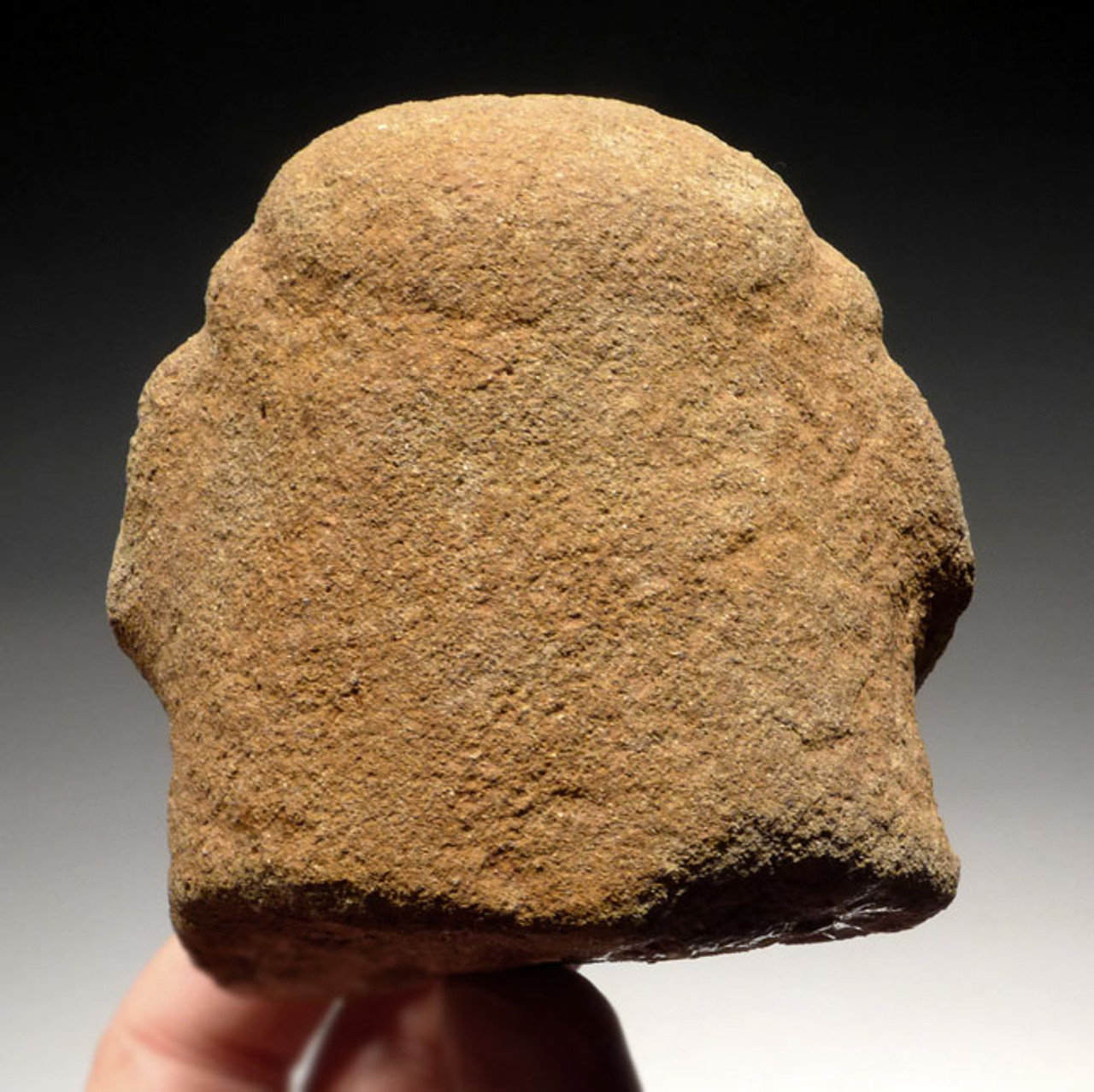Product Description
ITEM #
|
PC202
|
||
ID
|
Stone Figure
|
||
FOUND
|
Atlantic Watershed - Central America
|
||
AGE
|
Period IV: 300 B.C. - 500 A.D.
|
||
SIZE
|
3.25" x 3" overall
|
||
CONDITION
|
FROM A LARGE STATUE FIGURE - NO REPAIR
|
||
NOTE
|
AFFORDABLE SOLID STONE PRE-COLUMBIAN
|
||
INCLUDES STAND - Actual Item - One Only
Comes with a certificate of authenticity / information sheet |
|||
Possibly from a former large complete figure, or made as a solitary head, this spectacular carved stone head features a solemn look. It can be attributed to the Greater Nicoya Pre-Columbian culture of Central America. It was carved from a single block of basalt and shows typical features found in the stone figures of this culture. It is INTACT WITH NO REPAIR OR RESTORATION. Original mineral and burial sediments still intact and present - features lacking in modern fakes. Carved stone ancient objects are far more scarce than ceramics which were easily produced in large quantities compared to the time it took to carve a single stone object.
The Greater Nicoya Pre-Columbian Culture is an archaeological culture that prevailed in the area of Latin America comprising the far southwestern coastal region of Honduras, the far northwestern Pacific coastal region of Costa Rica and the Pacific side of coastal Nicaragua. This indigenous Indian culture thrived for many centuries before the first Spanish explorers made contact around 1500 A.D.. The people had no written language but spoke Nahuatl and had continual contact with the Aztec (Mexica) Indians of Central Mexico. The Gran Nicoya culture included many beautiful designs incorporating a variety of different mammals, reptiles and amphibians in effigy pieces. Their pottery is also known for complex glyph-like painted decorations. In the first 500 to 600 years A.D., resources became low as populations grew and warfare become increasingly evident. Tribes in this region practiced head-hunting and victim sacrifice in their warfare.
 US DOLLAR
US DOLLAR
 EURO
EURO
 AUSTRALIAN DOLLAR
AUSTRALIAN DOLLAR
 CANADIAN DOLLAR
CANADIAN DOLLAR
 POUND STERLING
POUND STERLING












